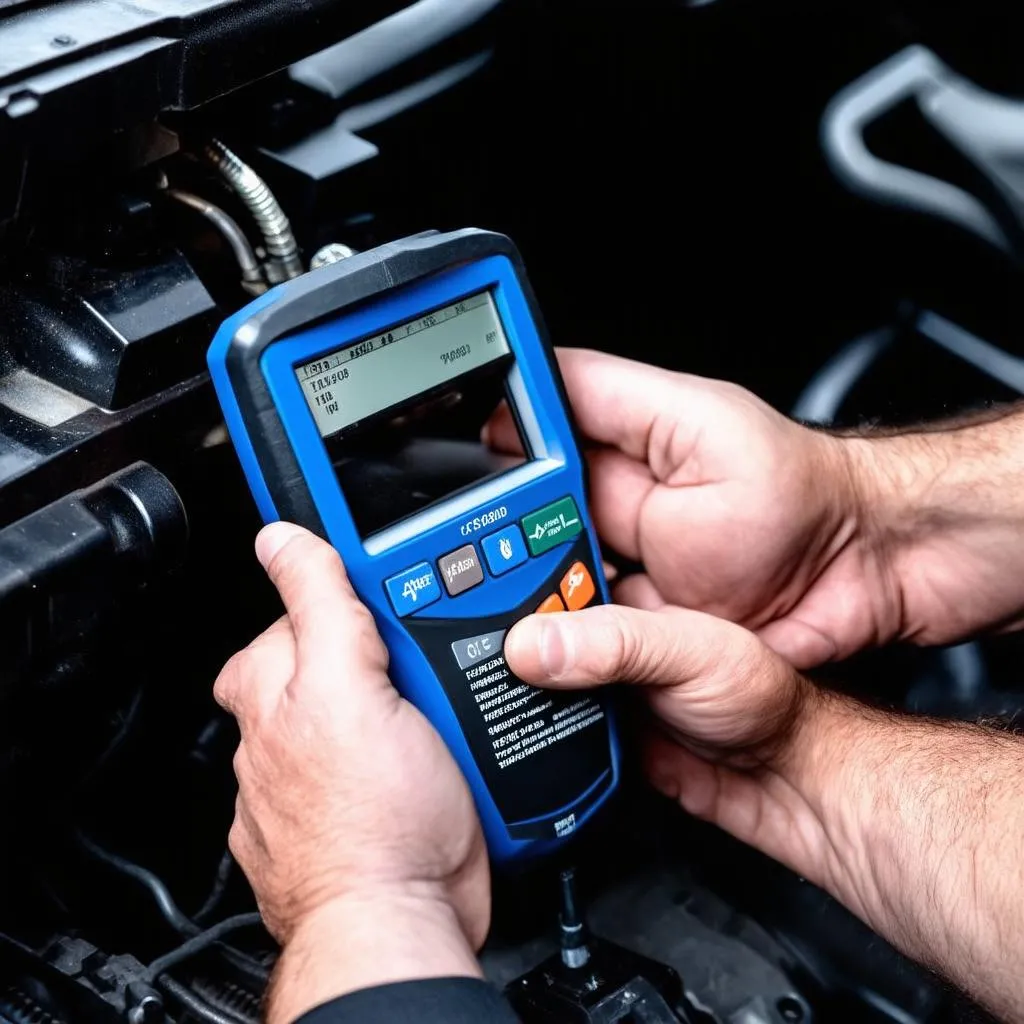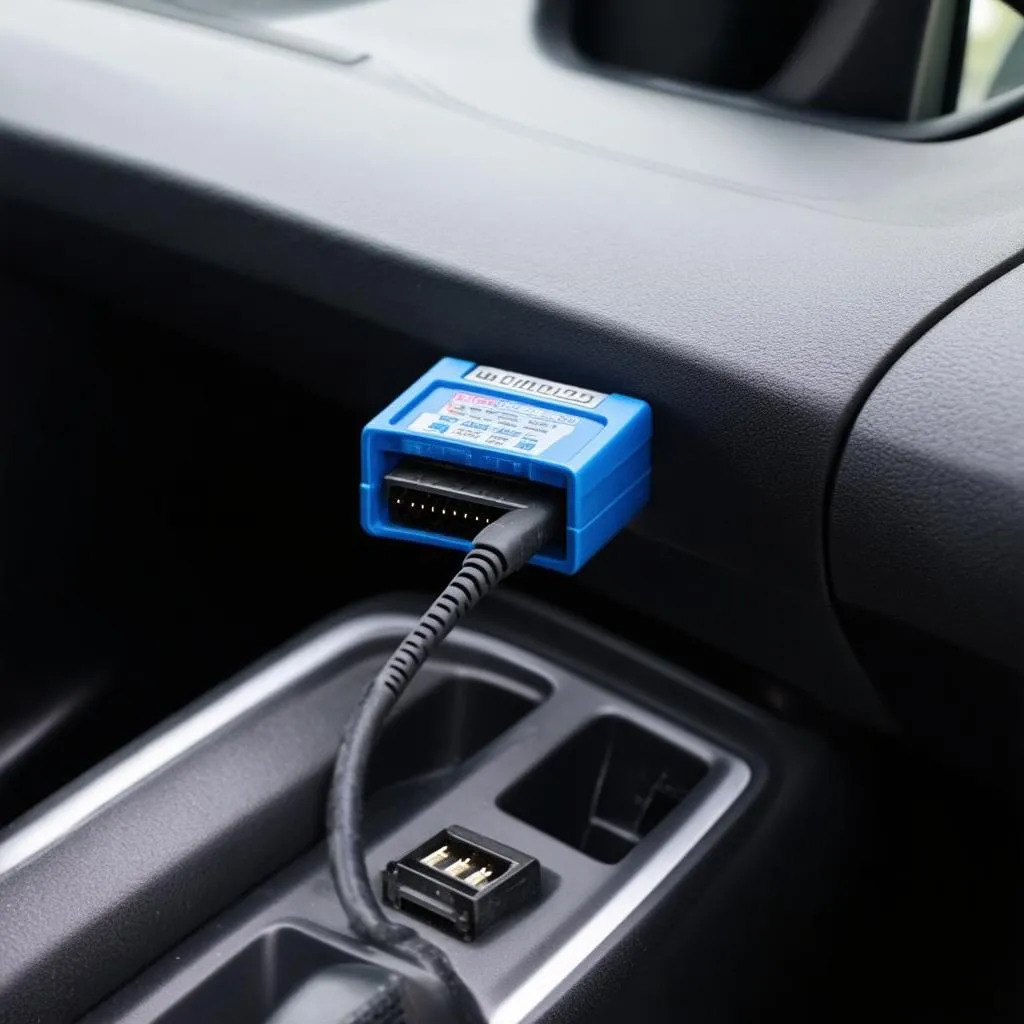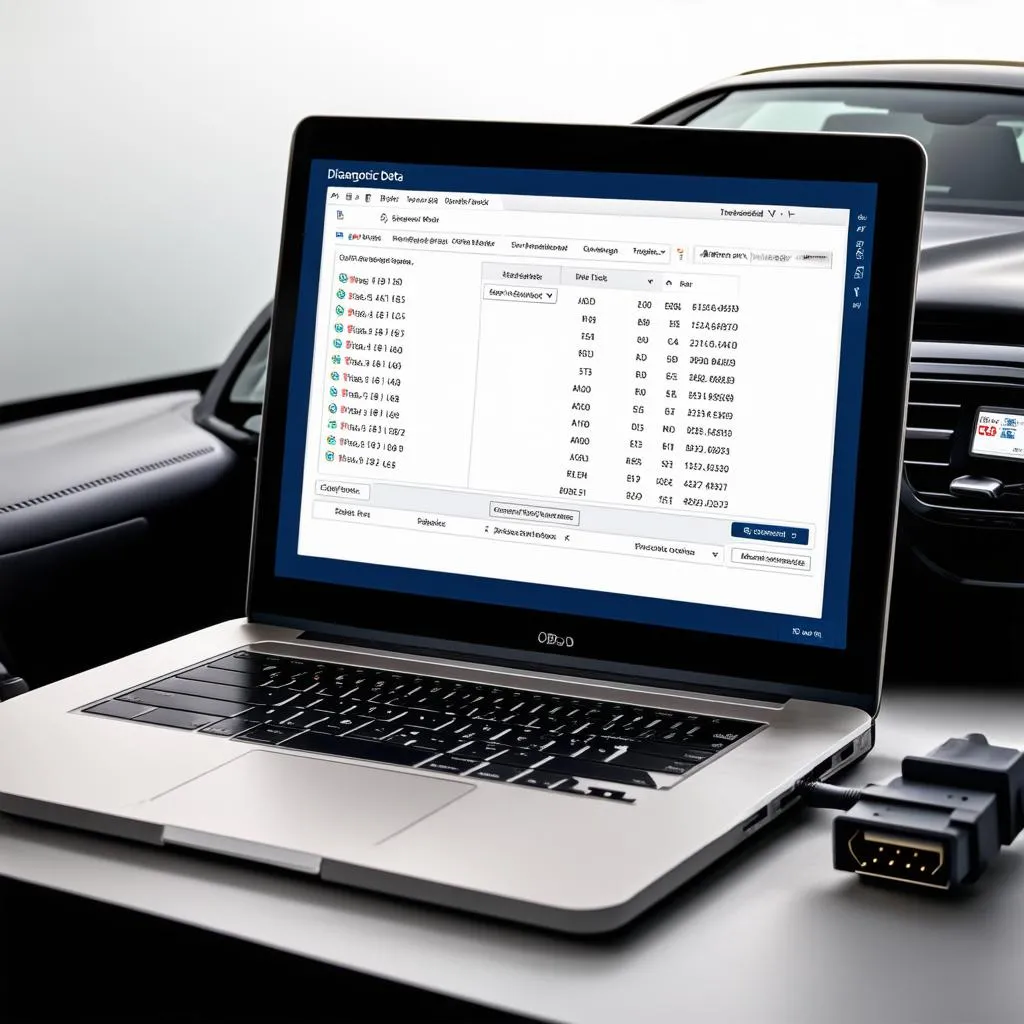Have you ever wondered why your mechanic always seems to plug a mysterious device into your car? That device connects to your car’s OBD port, and it’s a window into the health and performance of your vehicle. But what exactly is an OBD port, and what does it do? Let’s delve into this automotive mystery.
Understanding the OBD Port: A Gateway to Your Car’s Health
The OBD port, short for On-Board Diagnostics port, is a standardized connector found on most vehicles manufactured since 1996. It’s like a tiny door that allows access to your car’s internal data, allowing mechanics and even you, the driver, to monitor and diagnose various aspects of your vehicle’s performance.
The OBD Port’s Role in Automotive Diagnostics
Imagine your car as a complex orchestra, with each component playing a vital role in keeping the vehicle running smoothly. The OBD port acts like the conductor, collecting information from each instrument (sensor) and relaying it to the dashboard or a diagnostic tool. This information is invaluable for:
- Identifying Issues: The OBD port can detect a wide range of problems, including engine trouble, transmission issues, airbag malfunctions, and more. It’s like having a built-in doctor for your car.
- Monitoring Performance: Beyond just diagnosing problems, the OBD port allows you to monitor your car’s performance in real-time. You can see things like engine temperature, fuel consumption, and even speed.
- Improving Fuel Efficiency: By monitoring your car’s performance, you can identify areas for improvement, leading to better fuel economy.
The History of the OBD Port: A Technological Evolution
The concept of automotive diagnostics began decades ago, but the OBD port as we know it today emerged in the 1990s with the introduction of OBD-II standards. This standardized system ensured that diagnostic tools could communicate with any vehicle equipped with an OBD-II port, regardless of the manufacturer. This was a major advancement in automotive technology, making it easier for mechanics to diagnose and repair vehicles.
Frequently Asked Questions About the OBD Port
1. Where is the OBD Port Located?
The OBD port is typically found under the dashboard on the driver’s side, near the steering column. It can also be found in other locations, depending on the vehicle model.
2. How Can I Use the OBD Port?
You can use the OBD port with a variety of diagnostic tools. Some tools are simple code readers that display basic information about your vehicle’s health, while others are more advanced scanners that can access a wider range of data.
3. Can I Use the OBD Port to Tune My Car?
Yes, you can use the OBD port to tune your car’s performance, but it’s important to use reputable software and tools. Tuning can be a complex process, so it’s best to consult with a qualified technician if you’re unsure.
4. What is the Difference Between OBD-I and OBD-II?
OBD-I was the earlier standard, and it was less comprehensive than OBD-II. OBD-II is the current standard and offers a wider range of diagnostics capabilities.
Navigating the World of OBD-II Diagnostic Tools
With so many diagnostic tools available, it’s important to choose the right one for your needs. There are several types of OBD-II tools, including:
- Code Readers: These basic tools can display diagnostic trouble codes (DTCs) that indicate potential problems.
- Scanners: Scanners offer more advanced capabilities, allowing you to monitor real-time data, clear diagnostic codes, and even perform some basic tuning adjustments.
- Diagnostic Software: Specialized software can be used with a laptop or smartphone to access even more detailed information about your vehicle.
Why the OBD Port is Essential for Modern Car Owners
The OBD port is an essential tool for modern car owners, offering insights into the health and performance of their vehicles. By understanding the OBD port’s capabilities, you can make informed decisions about your car’s maintenance and ensure a smooth and enjoyable driving experience.
 Where is the OBD Port Located?
Where is the OBD Port Located?
A Word of Caution: The OBD Port and the Power of Information
The OBD port offers a wealth of information about your vehicle, but it’s important to use it responsibly. Some diagnostic tools can be used to manipulate your car’s performance, which can be dangerous. Always use reputable tools and software, and be cautious about making changes to your car’s settings without consulting a qualified technician.
Conclusion: The OBD Port – A Key to Automotive Understanding
The OBD port is a gateway to understanding your car’s health and performance. By leveraging this technology, you can ensure that your vehicle runs smoothly and efficiently.
Whether you’re a seasoned mechanic or a curious car owner, the OBD port is a valuable tool that can help you stay on top of your car’s maintenance and keep it running its best.
 OBD Port Tool
OBD Port Tool
 OBD Port Data
OBD Port Data
If you have any questions about the OBD port or need help with diagnostics, feel free to reach out to us! We have a team of experienced automotive technicians who can assist you 24/7 via Whatsapp: +84767531508. We can help you unlock the secrets of your vehicle’s data and ensure your car’s performance is running at its peak.
What are your thoughts on the OBD port? Share your experiences in the comments below!